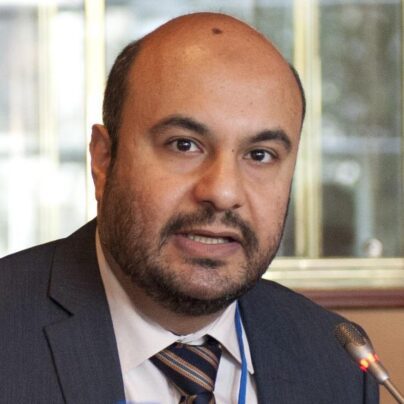A new face from Palestine is catching the world’s attention. He did not carry a stone or a rifle, but the camera of a journalist. This was clearly considered by the Israeli army to be a dangerous weapon, as it documented their violations and provided the world with a view of the field. Israeli soldiers, therefore, have been eager to target those who are carrying them.
It is Yaser Murtaja who emerges today with a shining smile on his face as a symbol of the Palestinian media and the sacrifices of photographers and correspondents on the ground under Israeli fire. An Israeli sniper shot Murtaja while he was covering the second week of the “Great March of Return” on the outskirts of the eastern Gaza Strip on Friday 6 April. He was busy taking pictures, even as an Israeli soldier hunted him, with his finger on the trigger. The journalist fell to the ground, as did his camera.
Murtaja’s lens laid out the impressive scenes of the protest to the scrutiny of the world beyond the Gaza Strip, although he himself still dreamt of travelling outside the giant prison that is the besieged territory. In a tweet posted last week, he expressed his wish to see his beloved Palestine from the window of an aeroplane; in that, he was just like many other young Palestinians growing up under Israel’s occupation and siege. His “prison” was the 360 square kilometres of the occupied territory.His ambitious desire to get an aerial view of his homeland was not limited to flying himself; he was one of the first to use a non-hostile camera drone in the Gaza Strip.
READ: Journalist killed by Israel was not operating camera drone
The only airport in the enclave was bombed by Israel less than two years after it opened. Yaser Murtaja tried to travel abroad through the Rafah Border Crossing a few months before he was shot and killed by the Israeli army, but his repeated attempts failed because of the harsh closures imposed by the Egyptian border authorities. He had no chance of crossing the Beit Hanoun/Erez crossing controlled by the Israelis.
The journalist’s dream of travelling did not evaporate with his last breath. With his smiling face, Yaser Murtaja was elevated to the heights above the horizon in the eyes of his people. Today he is viewed as a model of courage because he photographed the reality of the occupation, from which the Israeli leadership is trying to divert attention from their brutality by targeting reporters and photojournalists.
When he went out on Friday to take pictures of the mass protest on the outskirts of the Gaza Strip, Murtaja was preoccupied with capturing the amazing scenes of Palestinian grandmothers wearing their embroidered dresses in wagons dragged by livestock and carrying Palestinian flags. Elderly refugees walked with wooden crutches in their hands and headed in the direction of their towns which have been occupied since the 1948 Nakba. Wounded people, who were shot by Israeli snipers only a week ago, insisted on participating again even if they had to be carried on the shoulders of their relatives and friends. Along with the thousands of other men, women and children they were calling for the legitimate return to their towns and villages across the border which they had never seen, but knew in intimate detail handed down from generation to generation.
#YaserMurtaja
The people of Palestine caught the media’s attention on that day in stunning style. A huge curtain of smoke rising from burning tyres blocked them from the sightlines of the Israeli soldiers lining the border, in an unorthodox use of carbon emissions. The message that this sent made it clear to everyone that Gaza will not suffocate alone even if the international isolation and blockade stay in place and the rights of Palestinian refugees continue to be ignored.
Yaser Murtaja died from his wounds and was carried to his grave by the community he served. His photographs, though, remain in the hands of the world as evidence of Israel’s atrocities and continuous violations of human rights and international laws and conventions. The man may have fallen, but his photographic legacy hasn’t.
The views expressed in this article belong to the author and do not necessarily reflect the editorial policy of Middle East Monitor.




![Palestinian Journalists Arrested by Israel - Cartoon [Sarwar Ahmed/MiddleEastMonitor]](https://i0.wp.com/www.middleeastmonitor.com/wp-content/uploads/2017/10/20160504_SA-Palestinian-Journos-Arrested-by-Israel.png?resize=333%2C333&ssl=1)








